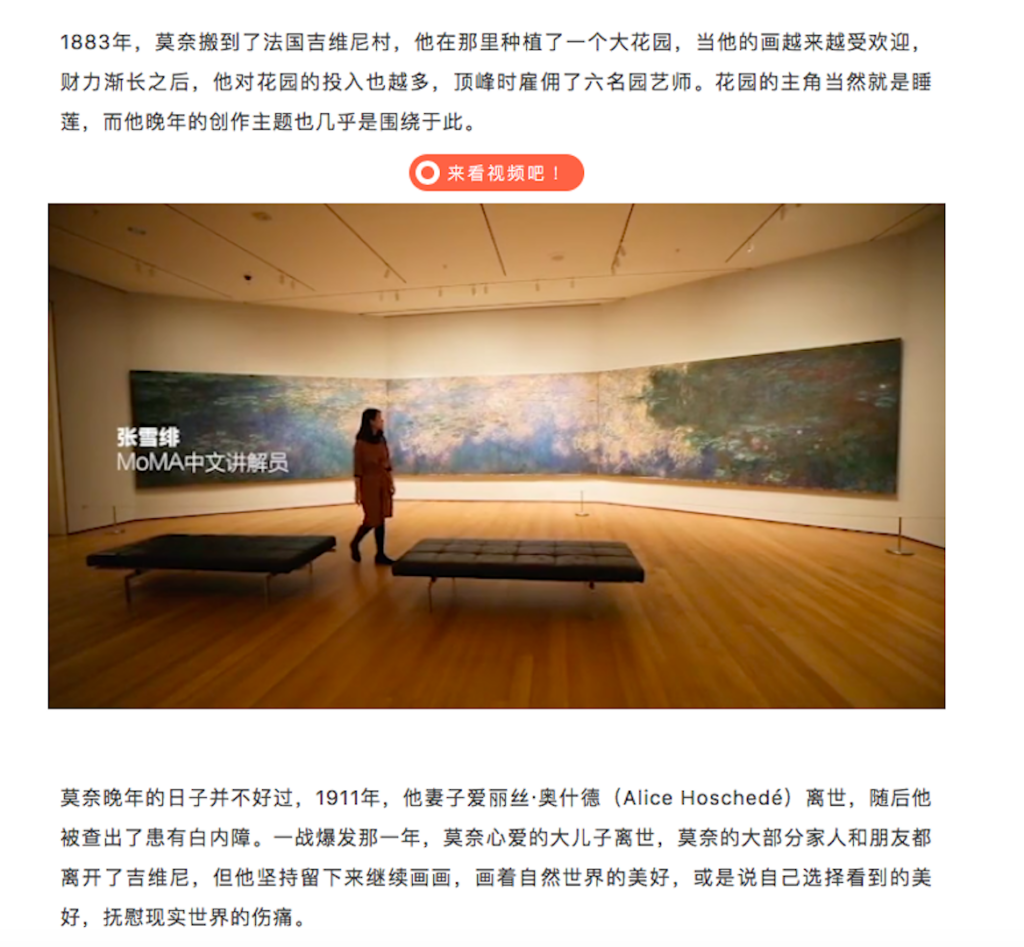After a four-month-long renovation, an added 47,000 square feet, and a cost of $450 million, America’s newly-reopened premier modern art museum can be partially understood in numerical terms. But one overlooked metric can be found in MoMA’s revamped performance on WeChat. With a 200 percent increase in Q3 article reads over the same quarter last year, the museum is starting to see the fruits of a reinvigorated push to connect with China.
MoMA was one of the early adopters of Chinese social media on the international museum circuit. It launched on Weibo in 2013 and began burnishing its image across WeChat with posts featuring Monet’s Water Lilies and Warhol’s Soup Cans shortly thereafter. The Manhattan institution’s imperious status with China’s culturally curious travelers is hardly surprising — its stellar collection, permanent place on tour group itineraries, and association with the hugely popular MoMA Design Store have made it New York’s second-most popular tourist attraction among Chinese travelers since 2016, according to Chinese travel website Mafengwo.
Even still, its recent WeChat performance merits attention. While many museums simply translate English-language content and write generic articles about their collections, MoMA is tailoring posts specifically for Chinese readers by offering deep dives into the stories behind MoMA artworks, creating video guides with its Chinese curator Sophie Zhang, and building a community of readers by inviting art lovers into their WeChat group. These efforts saw its post that traced MoMA’s 90-year history receive nearly as many reads as all of its articles from Q3 2018.

MoMA’s Chinese curator Sophie Zhang gives a tour of Monet’s Water Lillies. Image: MoMA WeChat
“I have been impressed with MoMA’s really strong performance on WeChat,” says Sienna Parulis-Cook, Associate Director with the China marketing specialists Dragon Trail. “They’ve made very good use of video content and gifs… at the top of every article, they have a gif button that you can tap to follow the account or share the article. This must be working and attracting more views to the content.”
One of the barriers to Western art engagement in China are insecurities surrounding a lack of knowledge about Modern art, but the casual nature of Zhang’s videos across its series Must-See Works at MoMA helps work against such fears. Take the description of her first encounter with Vincent Van Gogh’s “The Starry Night” for example. “It was five minutes before the gallery’s closing time, and I came across the painting accidentally,” she says. “I was stunned by the bright colors and its distorted vision.”
The words sound like those of a first-time visitor or a casual museumgoer rather than a long-time museum professional, and it’s this type of plainspoken yet informative content that is key for boosting WeChat reads — although the hype that comes with a half-billion-dollar relaunch helps too.
Additional reporting by Wenzhuo Wu



